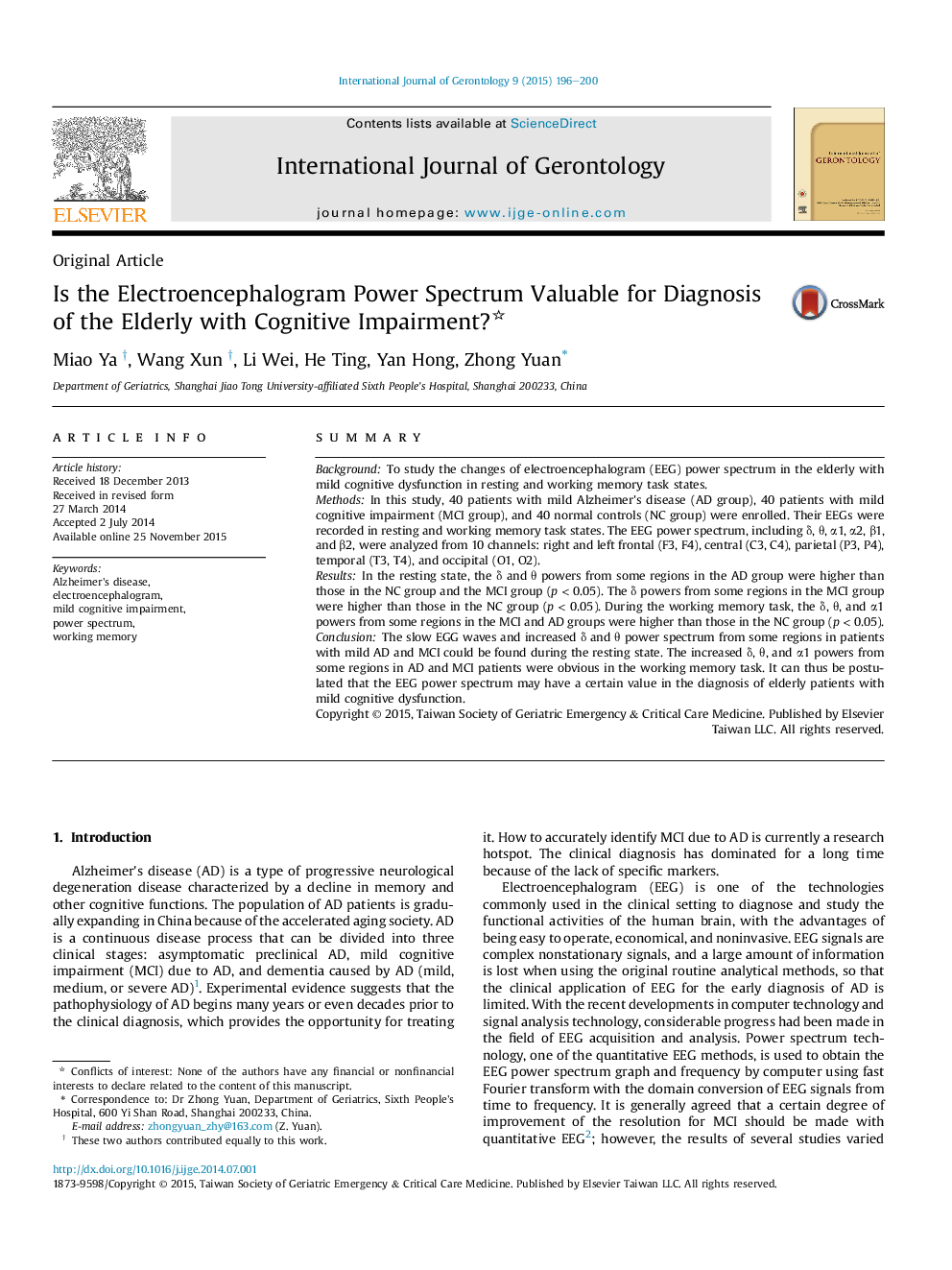| Article ID | Journal | Published Year | Pages | File Type |
|---|---|---|---|---|
| 3325107 | International Journal of Gerontology | 2015 | 5 Pages |
SummaryBackgroundTo study the changes of electroencephalogram (EEG) power spectrum in the elderly with mild cognitive dysfunction in resting and working memory task states.MethodsIn this study, 40 patients with mild Alzheimer's disease (AD group), 40 patients with mild cognitive impairment (MCI group), and 40 normal controls (NC group) were enrolled. Their EEGs were recorded in resting and working memory task states. The EEG power spectrum, including δ, θ, α1, α2, β1, and β2, were analyzed from 10 channels: right and left frontal (F3, F4), central (C3, C4), parietal (P3, P4), temporal (T3, T4), and occipital (O1, O2).ResultsIn the resting state, the δ and θ powers from some regions in the AD group were higher than those in the NC group and the MCI group (p < 0.05). The δ powers from some regions in the MCI group were higher than those in the NC group (p < 0.05). During the working memory task, the δ, θ, and α1 powers from some regions in the MCI and AD groups were higher than those in the NC group (p < 0.05).ConclusionThe slow EGG waves and increased δ and θ power spectrum from some regions in patients with mild AD and MCI could be found during the resting state. The increased δ, θ, and α1 powers from some regions in AD and MCI patients were obvious in the working memory task. It can thus be postulated that the EEG power spectrum may have a certain value in the diagnosis of elderly patients with mild cognitive dysfunction.
